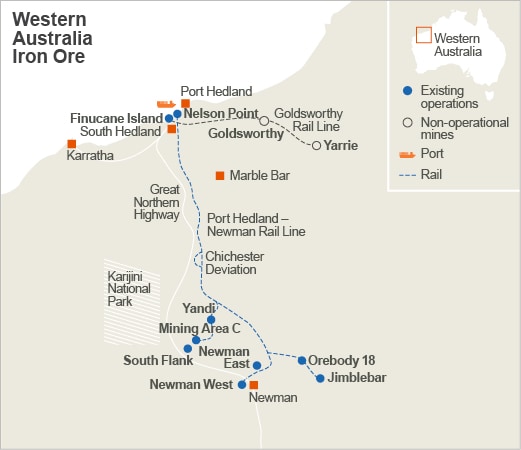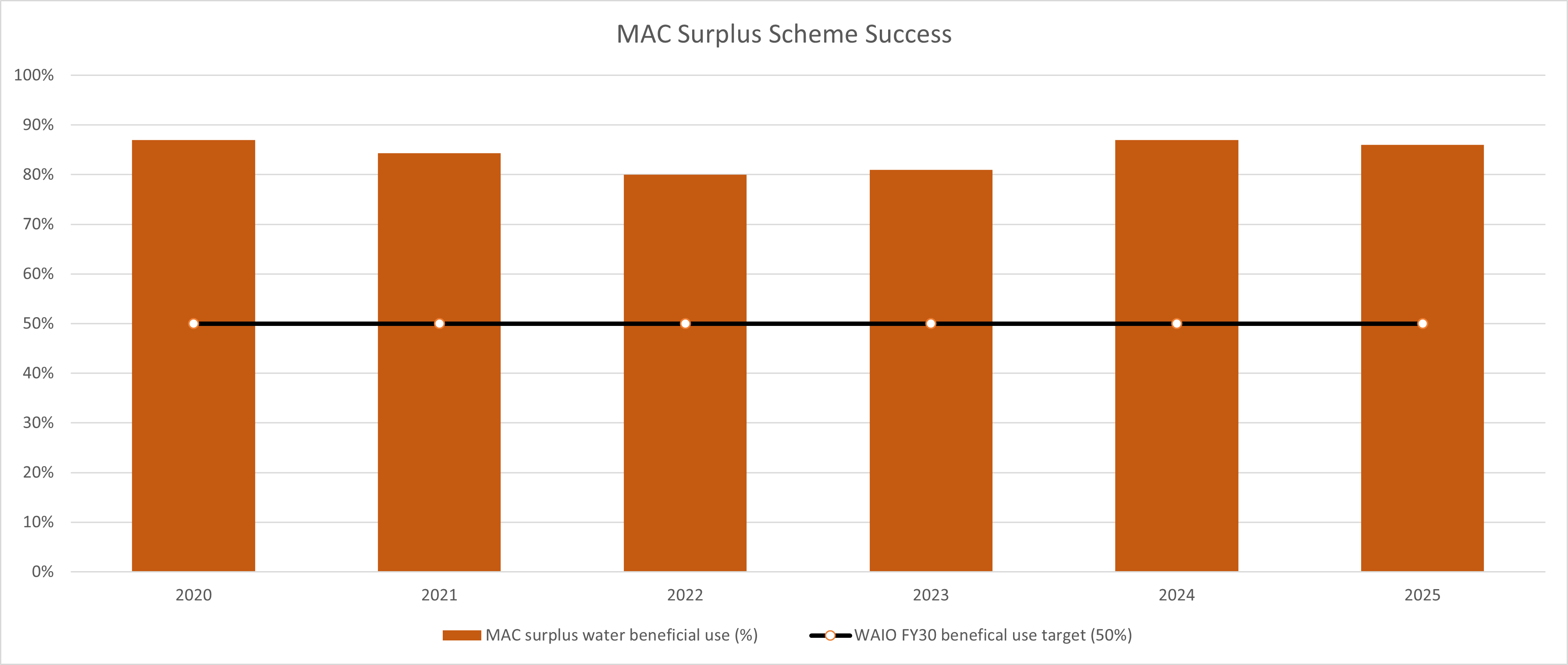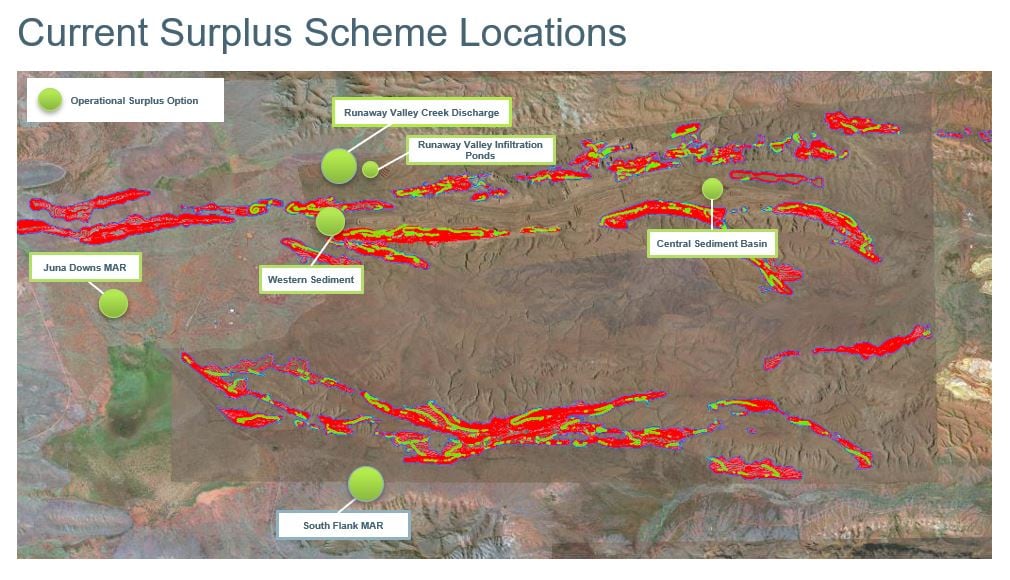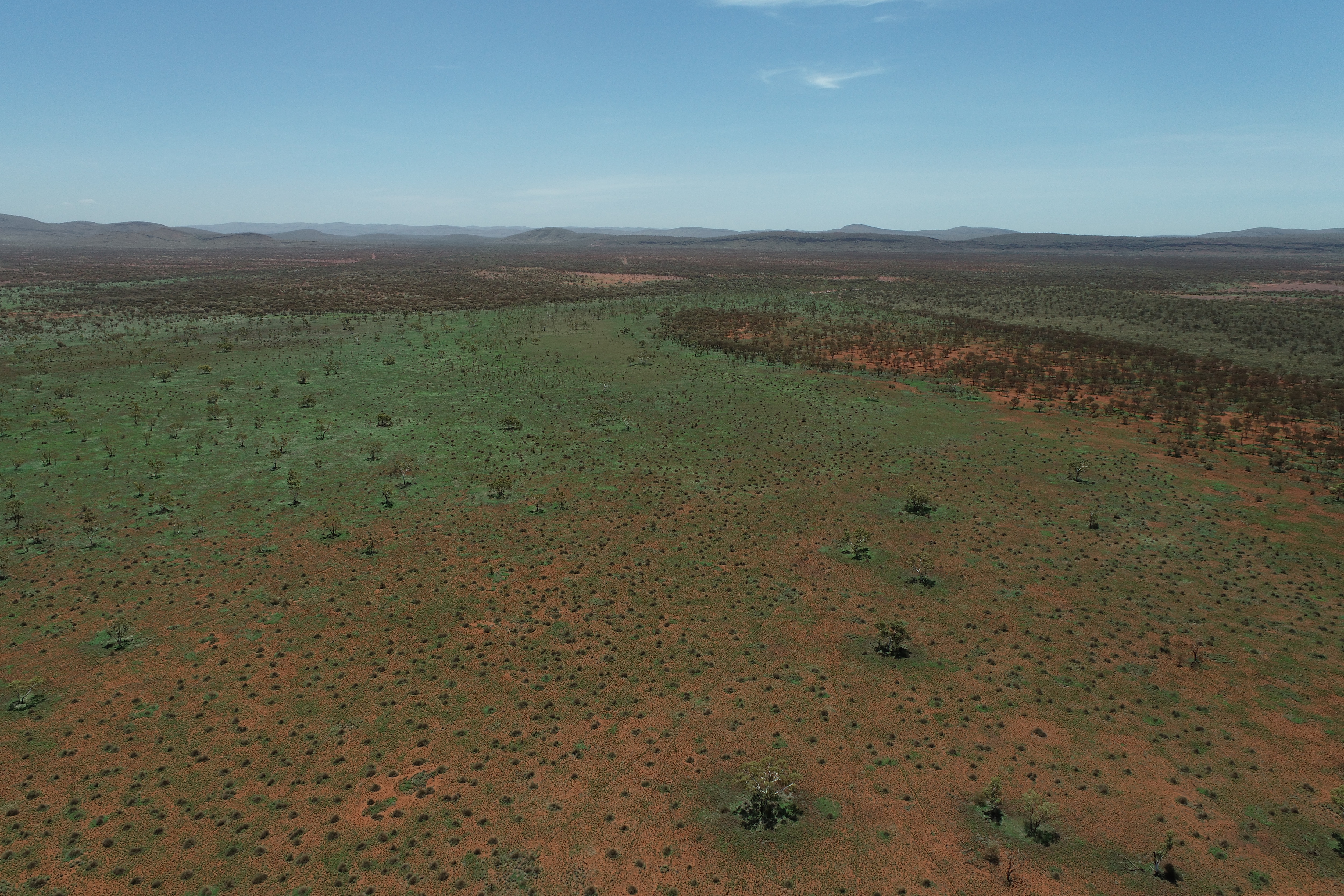19 August 2025
Western Australia Iron Ore (WAIO) will become increasingly reliant on mining below water table (BWT) tonnes, resulting in higher projected dewatering volumes and associated surplus water volumes (dewatering volumes that are excess to operational requirements). Our intent is to utilise our surplus water for beneficial use as much as practical and manage via sustainable water management practices.
We have reviewed WAIO’s water management practices and are installing additional surplus water management schemes to align with WAIO’s context-based water target and BHP’s 2030 Healthy environment goal. This also aligns with BHP’s vision for a ‘water secure’ world by 2030 and is consistent with the United Nations Sustainable Development Goals.
In FY2023, WAIO committed to a context-based water target that by FY2030 at least 50 per cent of surplus water will be prioritised for beneficial use to improve the sustainability of regional groundwater resources or generate social value. This includes measures that contribute to environmental resilience such as returning surplus water back into aquifers to reduce impacts on regional groundwater resources, or transferring water to another operation to reduce the need for additional natural water resources.

Figure 1 Location Plan – Mining Area C
WAIO’s Mining Area C (MAC), located approximately 350 kilometres south of Port Hedland (Figure 1), requires continued access to BWT ore to maintain product quality and extend the life of local deposits. As mining progresses, we anticipate an increase in surplus water that will exceed operational needs and current discharge capacity. For this reason, we are implementing a surplus water project in the area to increase surplus water capacity, aligning with planned mine developments and anticipated increases to surplus water volumes.
MAC has a complex mine dewatering and surplus water network which, includes 32 operational dewatering bores, 16 operational reinjection bores and a large number of associated monitoring bores. Dewatering volumes at MAC are significantly larger than site water demand so a large surplus volume is generated. In FY2025, collective abstraction was 47 megalitres per day (ML/day) (~547 litres per second (L/s)) with 19.5 ML/day (~225 L/s) of this being surplus to site requirements. Return to nearby groundwater aquifers benefits the environment by mitigating drawdown from nearby mines and storing water so it is preserved for environmental or human benefit. Increasing the return to ground capacity has allowed our reliance on creek discharge to be progressively reduced.

Figure 2 MAC Surplus Water Beneficial Use (2020 to 2025)
At MAC, the surplus schemes were approved (subject to conditions) by the Western Australian Minister for Environment under Part IV of the Environmental Protection Act 1986 (WA) (Ministerial Statement 1072).
The surplus schemes consist of the Juna Downs managed aquifer recharge (MAR), South Flank MAR, Runaway Valley infiltration ponds, as well as Western and Central sediment basins (Figure 3). Ministerial Statement 1072 contains conditions for these surplus schemes, including those relating to Juna Downs MAR, which requires management and protection of nearby environmental receptors (Figure 4 shows the closest environmental receptor to this surplus scheme – Coondewanna Flats).
These schemes use surplus water for beneficial use where water is returned to the environment to improve the sustainability of the regional groundwater resource.

Figure 3 Existing Surplus Water Network – Mining Area C
Based on the design and capacity of these surplus schemes, MAC was able to return 86 per cent (16.7 ML/d or 193 L/s) of the FY2025 surplus water to regional aquifers to offset potential drawdown (Figure 3) and preserve water for future beneficial use (for example, Juna Downs MAR, which contributes to groundwater recovery offsetting drawdown in the Coondewanna Flats region).
Beyond FY2025, we are seeking to expand the use of water management schemes, including additional managed aquifer reinjections and infiltration ponds, as the surplus volumes increase, so that the majority of surplus water is returned to ground for beneficial use.
Our current forecasts estimate that by FY2030, MAC has the potential for up to 90 per cent of surplus water to be used for beneficial use.

Figure 4 Coondewanna Flats – nearby environmental receptor
Get the latest BHP news alerts, straight to your inbox
Get BHP news first. Stay in touch with our latest updates, investor news and media releases.


